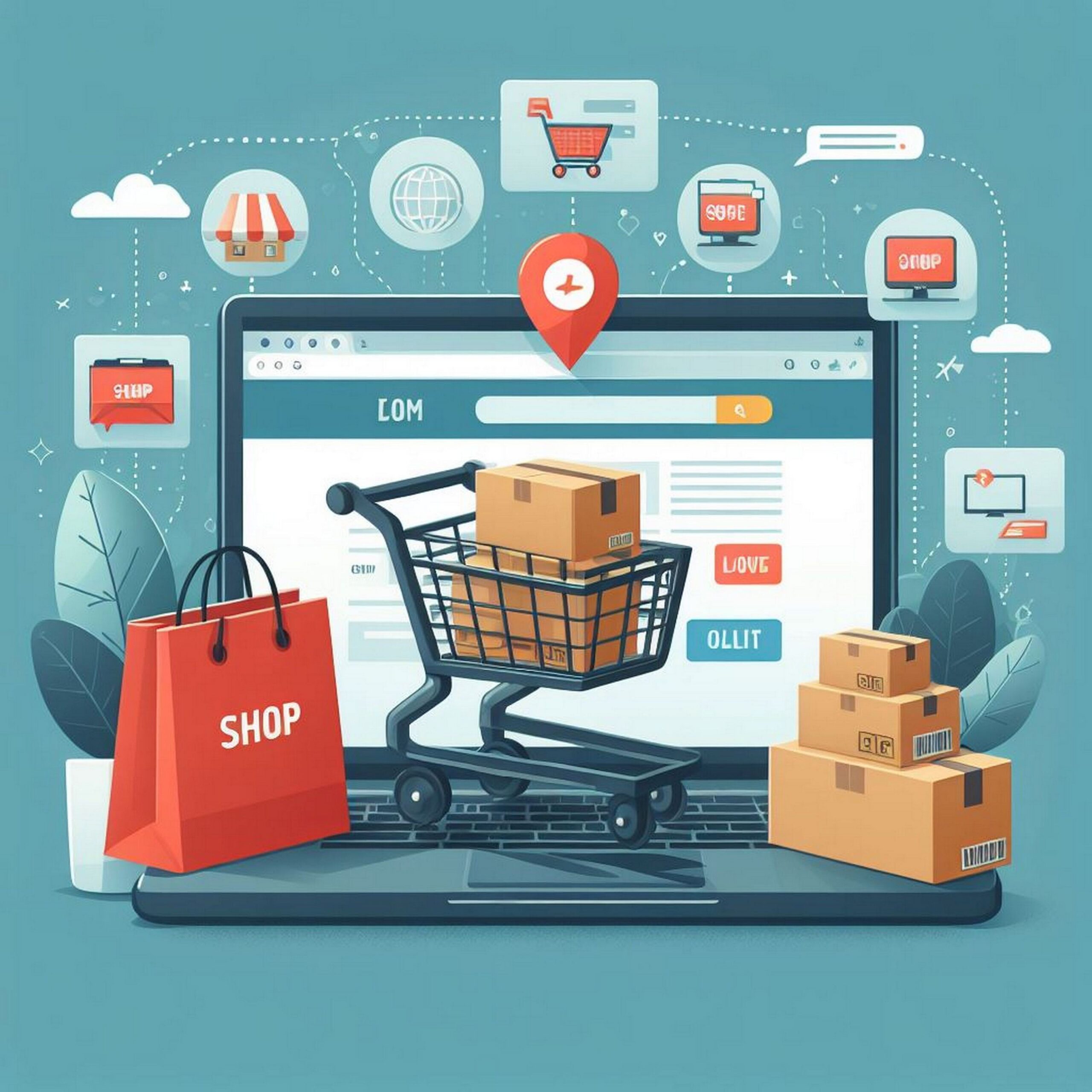Starting a Shopify dropshipping business can be an excellent way to enter the world of e-commerce without the need for significant upfront investment or inventory management.
Dropshipping allows you to sell products directly to customers while the supplier handles the shipping and fulfillment process.
With the right approach and strategies, you can build a thriving Shopify dropshipping store that generates substantial profits.
In this comprehensive guide, we’ll walk you through the 10 essential steps to create a successful Shopify dropshipping business from scratch.
By following these proven methods and best practices, you’ll be well on your way to establishing a profitable online venture in no time.
So, let’s dive in and discover how you can turn your entrepreneurial dreams into reality with Shopify dropshipping.
We strongly recommend that you check out our guide on how to take advantage of AI in today’s passive income economy.
Table of Contents
Step 1: Choose a Niche
The first and most crucial step in creating a successful Shopify dropshipping store is selecting the right niche.
A niche is a specific segment of the market that you’ll target with your products and marketing efforts.
When choosing a niche, consider your interests, passions, and expertise, as this will make it easier to create compelling content and connect with your target audience.
Additionally, conduct thorough market research to ensure that there is sufficient demand for products within your chosen niche.
Look for niches with high search volume, low competition, and the potential for profitability.
Some popular niches for Shopify dropshipping include fashion, beauty, home decor, pet supplies, and gadgets.
Tip: Validate Your Niche
Before committing to a niche, it’s essential to validate its potential for success.
Use tools like Google Trends, Amazon Best Sellers, and social media platforms to gauge the popularity and demand for products within your chosen niche.
You can also analyze the competition to identify gaps in the market and opportunities for differentiation.
By validating your niche, you’ll minimize the risk of investing time and resources into an unprofitable venture.
Step 2: Find Reliable Suppliers
Once you’ve selected your niche, the next step is to find reliable suppliers who can provide high-quality products at competitive prices.
When sourcing suppliers for your Shopify dropshipping store, look for companies with a proven track record of timely fulfillment, responsive customer service, and positive reviews from other dropshippers.
Popular platforms for finding dropshipping suppliers include AliExpress, SaleHoo, and Worldwide Brands.
These platforms offer a wide range of products across various niches, making it easy to find suppliers that align with your business goals.
Before partnering with a supplier, be sure to communicate your expectations clearly and request product samples to ensure quality control.
Tip: Build Strong Relationships with Suppliers
Building strong relationships with your suppliers is crucial for the long-term success of your Shopify dropshipping business.
Maintain open lines of communication, provide regular feedback, and work collaboratively to resolve any issues that may arise.
By fostering positive relationships with your suppliers, you’ll ensure a smooth and reliable fulfillment process, which will ultimately lead to higher customer satisfaction and repeat business.
Step 3: Set Up Your Shopify Store
Now that you’ve chosen your niche and found reliable suppliers, it’s time to set up your Shopify dropshipping store.
Shopify is a powerful e-commerce platform that offers a user-friendly interface, customizable templates, and a wide range of features to help you create a professional-looking online store.
To get started, sign up for a Shopify account and select a plan that suits your business needs.
Next, choose a template that aligns with your brand identity and customize it to create a unique and engaging user experience.
Be sure to optimize your store for mobile devices, as a significant portion of online shopping takes place on smartphones and tablets.
Tip: Invest in a Custom Domain
While Shopify provides a default domain for your store, investing in a custom domain can help establish your brand’s credibility and make it easier for customers to find you online.
A custom domain also allows you to create branded email addresses, which can further enhance your professional image.
When selecting a domain name, choose one that is short, memorable, and relevant to your niche.
Step 4: Add Products to Your Store
With your Shopify store set up and customized, it’s time to add products to your inventory.
When selecting products for your Shopify dropshipping store, focus on items that align with your niche and have the potential for high demand and profitability.
Use your market research to identify trending products and popular items within your niche.
When adding products to your store, be sure to include high-quality images, detailed descriptions, and competitive pricing.
Optimize your product pages for search engines by including relevant keywords in titles, descriptions, and meta tags.
This will help improve your store’s visibility in search results and attract organic traffic.
Tip: Offer Bundled Products and Upsells
To increase your average order value and boost profitability, consider offering bundled products and upsells.
Bundled products are groups of complementary items sold together at a discounted price, while upsells are higher-priced or premium versions of the product a customer is currently purchasing.
By strategically implementing these tactics, you can encourage customers to spend more per transaction and maximize your revenue potential.
Step 5: Set Up Payment and Shipping
To start accepting orders and processing transactions, you’ll need to set up payment and shipping options for your Shopify dropshipping store.
Shopify offers a variety of payment gateways, including PayPal, Stripe, and Shopify Payments, which allow you to accept credit cards, debit cards, and other popular payment methods.
Choose the payment gateway that best suits your business needs and provides a secure and seamless checkout experience for your customers.
When setting up shipping, be sure to clearly communicate your policies and rates to customers.
Work with your suppliers to determine realistic shipping times and costs, and consider offering free or discounted shipping to incentivize purchases.
Tip: Offer Multiple Shipping Options
To cater to different customer preferences and needs, consider offering multiple shipping options, such as standard, expedited, and overnight delivery.
This will allow customers to choose the shipping method that best suits their timeline and budget, increasing the likelihood of a successful sale.
Be sure to clearly display shipping costs and estimated delivery times on your product pages and during the checkout process to avoid any confusion or surprises for your customers.
Step 6: Create Compelling Product Descriptions and Images
In the world of e-commerce, product descriptions and images play a crucial role in attracting and converting customers.
When creating product descriptions for your Shopify dropshipping store, focus on highlighting the key features, benefits, and unique selling points of each item.
Use persuasive and engaging language to appeal to your target audience and address any potential objections or concerns they may have.
In addition to compelling descriptions, high-quality product images are essential for showcasing your items in the best possible light.
Use clear, well-lit photos that showcase the product from multiple angles and provide a sense of scale.
Consider investing in professional product photography or editing to ensure your images stand out from the competition.
Tip: Incorporate Customer Reviews and Testimonials
Social proof is a powerful tool for building trust and credibility with potential customers.
Incorporate customer reviews and testimonials into your product pages to provide real-world examples of the value and quality of your products.
Encourage satisfied customers to leave reviews by sending follow-up emails or offering incentives, such as discounts or loyalty points.
By showcasing positive feedback from previous buyers, you’ll help instill confidence in new customers and increase the likelihood of a sale.
Step 7: Implement Effective Marketing Strategies
To drive traffic and sales to your Shopify dropshipping store, you’ll need to implement effective marketing strategies.
Some popular marketing channels for e-commerce businesses include social media, email marketing, content marketing, and paid advertising.
When developing your marketing plan, focus on tactics that align with your target audience and business goals.
For example, if your niche is highly visual, platforms like Instagram and Pinterest may be more effective than text-based channels like Twitter.
Experiment with different marketing strategies and continuously track and analyze your results to identify what works best for your business.
Tip: Leverage Influencer Marketing
Influencer marketing can be a highly effective way to reach new audiences and drive sales for your Shopify dropshipping store.
Partner with influencers within your niche who have a strong following and align with your brand values.
Collaborate on sponsored posts, product reviews, or giveaways to expose your products to their engaged audience.
When selecting influencers, focus on those with high engagement rates and a genuine connection with their followers, rather than simply looking at follower count.
Step 8: Prioritize Customer Service
Providing exceptional customer service is crucial for the success of your Shopify dropshipping business.
Happy customers are more likely to make repeat purchases, leave positive reviews, and recommend your store to others.
To prioritize customer service, start by developing clear and comprehensive policies for returns, refunds, and exchanges.
Make sure your customers can easily contact you through multiple channels, such as email, phone, or live chat.
Respond to inquiries and concerns promptly and professionally, and always strive to find solutions that prioritize customer satisfaction.
Tip: Personalize the Customer Experience
Personalizing the customer experience can help build stronger relationships and foster brand loyalty.
Use customer data, such as purchase history and browsing behavior, to provide personalized product recommendations and targeted marketing messages.
Consider implementing a loyalty program that rewards customers for repeat purchases and engagement with your brand.
By making each customer feel valued and appreciated, you’ll create a memorable and positive experience that sets your Shopify dropshipping store apart from the competition.
Step 9: Continuously Optimize and Test
Creating a successful Shopify dropshipping store is an ongoing process that requires continuous optimization and testing.
Regularly analyze your store’s performance using tools like Google Analytics and Shopify’s built-in reporting features.
Monitor key metrics, such as traffic, conversion rates, average order value, and customer lifetime value, to identify areas for improvement.
Conduct A/B tests on various elements of your store, such as product pages, checkout process, and marketing campaigns, to determine what resonates best with your audience.
Use the insights gained from your analysis and testing to make data-driven decisions and continuously refine your strategies.
Tip: Stay Up-to-Date with Industry Trends
The e-commerce landscape is constantly evolving, with new trends, technologies, and best practices emerging regularly.
To stay ahead of the curve and maintain a competitive edge, make sure to stay up-to-date with industry trends and developments.
Attend webinars, read industry blogs, and participate in online communities to gain insights and learn from other successful Shopify dropshipping entrepreneurs.
By staying informed and adapting to changes in the market, you’ll be better equipped to capitalize on new opportunities and overcome challenges.
Step 10: Scale Your Business
As your Shopify dropshipping store gains traction and generates consistent sales, it’s time to start thinking about scaling your business.
Scaling involves expanding your operations, increasing your product offerings, and reaching new markets to drive growth and profitability.
To scale your business successfully, focus on streamlining your processes, automating repetitive tasks, and leveraging tools and technologies that can help you work more efficiently.
Consider expanding into new product categories or niches that complement your existing offerings, and explore opportunities for international expansion.
As you scale, be sure to maintain the quality of your products and customer service to ensure long-term success.
Tip: Reinvest Your Profits
Reinvesting your profits back into your business is essential for sustainable growth and success.
Use a portion of your earnings to invest in new product development, marketing initiatives, and technology that can help you streamline your operations and improve the customer experience.
By continually reinvesting in your Shopify dropshipping store, you’ll be able to stay ahead of the competition, capitalize on new opportunities, and build a thriving e-commerce business.
Conclusion
Creating a successful Shopify dropshipping store requires careful planning, strategic execution, and a commitment to continuous improvement.
By following the 10 steps outlined in this guide, you’ll be well on your way to building a profitable and scalable e-commerce business.
Remember to choose a niche that aligns with your interests and expertise, find reliable suppliers, and create a compelling online store that showcases your products in the best possible light.
Implement effective marketing strategies, prioritize customer service, and continuously optimize and test your store to ensure long-term success.
By staying up-to-date with industry trends and reinvesting your profits back into your business, you’ll be able to scale your Shopify dropshipping store and achieve your entrepreneurial dreams.
Frequently Asked Questions (FAQ)
Is Shopify worth it for dropshipping?
Yes, Shopify is an excellent platform for starting and running a dropshipping business.
It offers a user-friendly interface, a wide range of customizable templates, and powerful e-commerce features that make it easy to set up and manage your online store.
Shopify also integrates seamlessly with popular dropshipping apps and suppliers, making it simple to add products and fulfill orders.
With its reliable hosting, secure payment processing, and 24/7 customer support, Shopify provides a comprehensive solution for entrepreneurs looking to start a successful dropshipping business.
How much is Shopify dropshipping?
The cost of starting a Shopify dropshipping business varies depending on your specific needs and preferences.
Shopify offers three main pricing plans: Basic Shopify ($29/month), Shopify ($79/month), and Advanced Shopify ($299/month).
Each plan includes hosting, an SSL certificate, and access to various features and tools.
In addition to the monthly subscription fee, you may also need to invest in a custom domain, dropshipping apps, and marketing initiatives to drive traffic and sales to your store.
While it’s possible to start a Shopify dropshipping business with a minimal upfront investment, it’s important to budget for ongoing expenses and reinvest a portion of your profits back into your business for long-term growth and success.
How can I start Shopify dropshipping?
To start a Shopify dropshipping business, follow these key steps:
- Choose a niche and research potential products
- Sign up for a Shopify account and select a pricing plan
- Set up your online store, including choosing a theme and customizing your design
- Find and partner with reliable dropshipping suppliers
- Add products to your store and optimize your listings with compelling descriptions and images
- Set up payment and shipping options
- Launch your store and implement marketing strategies to drive traffic and sales
- Process orders and provide excellent customer service
- Continuously optimize and test your store to improve performance
- Scale your business by expanding your product offerings and reaching new markets
By following these steps and dedicating time and effort to your Shopify dropshipping business, you can build a successful and profitable e-commerce venture.
How do I start Shopify dropshipping in Nigeria?
Starting a Shopify dropshipping business in Nigeria follows the same general process as starting one in any other country.
However, there are a few specific considerations to keep in mind:
- Payment Processing: Shopify Payments is not available in Nigeria, so you’ll need to use an alternative payment gateway like PayPal, Flutterwave, or PayStack to accept payments from customers.
- Shipping and Fulfillment: When partnering with suppliers, make sure they offer reliable shipping options to Nigeria and are familiar with the country’s customs and import regulations.
Consider working with local fulfillment centers or suppliers to reduce shipping times and costs.
- Taxes and Regulations: Familiarize yourself with Nigeria’s tax laws and e-commerce regulations to ensure compliance and avoid any legal issues.
- Marketing and Localization: When promoting your store and products, consider the local context and tailor your marketing strategies to resonate with Nigerian consumers.
Use local social media platforms, influencers, and content that aligns with the country’s culture and values.
By addressing these specific considerations and following the general steps for starting a Shopify dropshipping business, you can successfully launch and grow your online store in Nigeria.

We strongly recommend that you check out our guide on how to take advantage of AI in today’s passive income economy.




